COVID-19: The Disproportionate Impact on Marginalized Populations
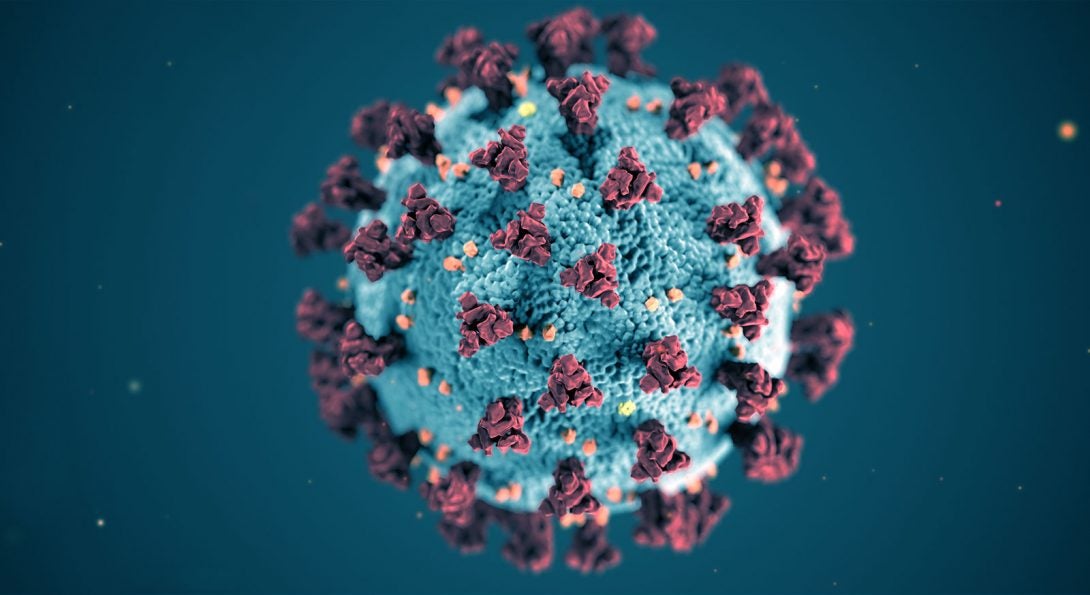
Under orders to shelter at home, there has been a well-intentioned impulse to describe the pandemic as a “great equalizer.” However, the impact of this public health crisis is anything but equal, and disproportionately affects communities of color and other vulnerable populations.
In the early days of America’s response to the COVID-19 pandemic, individuals from pop stars to politicians labeled the disease a great equalizer. There is a superficial truth to that statement: both rich and poor are asked to shelter at home, liberals and conservatives all may acquire the virus. But that commonality is a veneer, masking underlying social and economic inequities that make some populations more vulnerable to the disease than others. Such vulnerable populations are typically those who have experienced a history of discrimination and marginalization.
“The most vulnerable populations are those with less access to resources, which makes life more complicated for them,” says Clinical Associate Professor Annette Johnson. “Even before the pandemic, lack of access to resources and opportunity, and lack of access to health care made those individuals and families more vulnerable. During a health crisis such as this, the situation becomes exacerbated in many marginalized communities.”
Black and African-American Communities
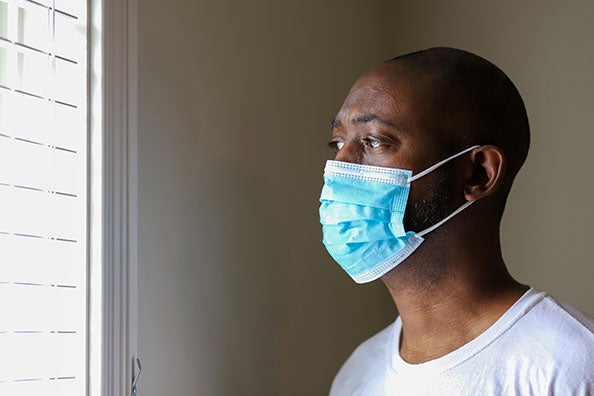
More recently, the disproportionate impact of the coronavirus for Chicago’s Black community has received some coverage and discussion, but the magnitude of disproportionality is stunning: as of April 7, 2020, Black Chicagoans comprised 30.1% of the city’s population, yet made up 52.1% of COVID-19 infections and 68.6% of deaths.
People in communities of color often suffer from the kinds of chronic health conditions that during this pandemic have been described as “underlying.” Assistant Professor Kalen Flynn, who has worked with urban youth of color, says that health inequity often has roots in structural social violence that increases rates of trauma among this population. “The traumas experienced by the youth I’ve worked with leads them to be more likely to have obesity, diabetes or heart disease as adults; health conditions that are more prevalent in communities of color and which make people more vulnerable to the virus,” she says. “And then on top of that, many under-resourced communities have limited access to quality health care. The coronavirus pandemic augments all of these preexisting health inequities.”
“People who are low income and people of color are also statistically less likely to have health coverage, and this is especially problematic in a state like Illinois where the Affordable Care Act marketplace is run by the federal government,” adds Assistant Professor Aaron Gottlieb. “Illinois needs permission from the federal level to reopen enrollment for ACA, and they have not agreed to do that. So that creates another limitation on health coverage in poor communities, and lack of coverage can prevent people from getting tested or treated because they fear what the financial implications may be.”
Additionally, there are factors that make Black Americans more at risk for exposure to the virus. Limited educational attainment means many Black people work in jobs that are deemed essential, ensuring that they remain more exposed. Gottlieb, whose work focuses on criminal justice reform, fears that further exposure could also arise from the increased police activity experienced in Black neighborhoods. “A number of police officers have tested positive for the virus, and people in communities of color are more likely to be stopped by police, so they are more likely to be put at risk,” says Gottlieb. “Police are expected to be proactive in stopping crime, not waiting until something has actually happened, which means stopping people and being in close contact. The way we ask police do their jobs in this country is not conducive to stopping COVID-19.”
Undocumented Latinx Communities
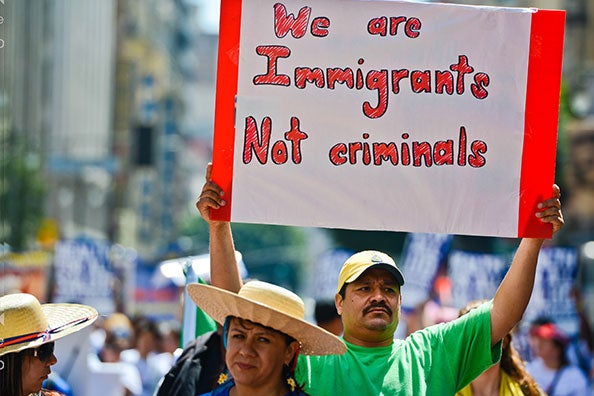
Restricted access to healthcare is also a fact of life for undocumented immigrants, who are not eligible for ACA coverage and tend to be employed in jobs that are deemed essential and do not provide health coverage. “People in these communities tend to use community clinics and emergency rooms for their health needs,” says Assistant Professor Daysi Diaz-Strong, “and right now emergency rooms are overwhelmed with coronavirus cases, which impacts their ability to address other more routine problems. Combined with fear to go to a hospital where you might risk getting infected, access to health care is further limited for undocumented families.”
Another complication is the Public Charge Rule, which went into effect in February of this year, and creates the potential for denial of legal permanent residency for individuals who are deemed likely to become a public charge due to lack of economic resources. “This is actually impacting people’s access to health care at this crucial time,” says Diaz-Strong. “If you are an immigrant who is planning to apply for legal status, the government will look to see if you have used public benefits. If you have, you might be considered a public charge and therefore inadmissible to the U.S. The rule applies to a small number of immigrants, but it’s very confusing and makes immigrants afraid to access services.” She adds that the government has said it will not count services used during the pandemic, but that the policy change creates additional confusion, and people may be unaware of the change. “Additionally, many undocumented immigrants simply don’t trust that use of services won’t count against them,” she says.
An additional stressor in the immigrant community is that a Supreme Court decision on DACA (Deferred Action for Childhood Arrivals) is expected in the near future, and there is a lot of anxiety about the potential end of DACA. “Many nonprofits that work with immigrants are preparing for this potential. If immigrants lose DACA, they lose their ability to work,” she says. “And the fact that this is happening during the pandemic creates further complication, stress and anxiety for these families.”
People in the Criminal and Juvenile Justice Systems
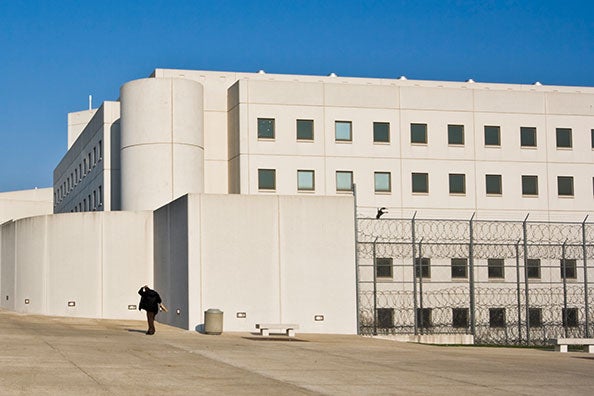
“Prisons are places where health and health care are particularly poor to begin with, let alone with an infectious disease like this, and incarcerated people are particularly at risk of getting and spreading the disease because social distance is nearly impossible in prison,” says Aaron Gottlieb. “Also, prisoners tend to have chronic health issues, making COVID-19 potentially more deadly for them. Add to that the aging of the prison population; about 20% of people in Illinois prisons are over 50, and older people are more susceptible to the disease. All of these factors make prisons an especially bad place to be with a disease such as this.”
Gottlieb also points to jails as sites where the virus may easily be spread. “In jails you have many people going in and out all the time, including guards. Someone who is detained in a jail gets exposed to so many people, and detainees aren’t being tested unless they exhibit severe symptoms. And then they’re sent home to their community,” he says. “It seems like a perfect recipe for spreading the disease.”
Associate Professor Henrika McCoy adds, “We know a lot of people are in jail because they don’t have $200 to pay bail, so now because they are poor their lives are being put at risk. Some cities have responded to the pandemic with decarceration, and some have decided to stop incarcerating people who have committed low-level crimes, but certainly not all, and not enough,” she says. “These are places that are already overcrowded, and we know that people of color are overrepresented in the criminal justice system, so they are put at greater risk for getting this virus.”
Gottlieb agrees, adding, “We live in a country where you are more than five times as likely to be incarcerated if you’re Black than if you’re white, and 1.5 times as likely if you’re Latinx. So COVID-19 in prisons and jails is likely to have a disproportionately large impact on people of color.”
McCoy, whose recent research has focused on young men of color, brings the conversation around to the juvenile justice system. “I think we are likely to see increased negative impact on mental health for some young people in the system. Because of social distancing, I know that attorneys are using Zoom to represent their juvenile clients. Based on my experiences as a social worker who worked both sides of the court, both child welfare and juvenile justice, I know how scared young people are when they walk into that courtroom,” she says. “I can’t imagine what it’s like to not have your attorney there with you, to give some level of comfort or support, and help you understand what’s happening when a judge is about to make a decision that could impact the rest of your life. And apparently this is happening across the country.”
She is also concerned about the possibility of increased rates of incarceration resulting from the pandemic’s negative economic impact. “We know crime rates across the country have generally been down, but I am worried about how the recession could raise crime rates. A lot of businesses won’t bounce back from the recession, and there will be job loss and delays in education,” McCoy says. “Historically, we know these factors lead to increased crime rates, which will bring more people into the criminal and juvenile justice systems. We need to be prepared for that aftermath from the pandemic.”
Youth in the Public School System
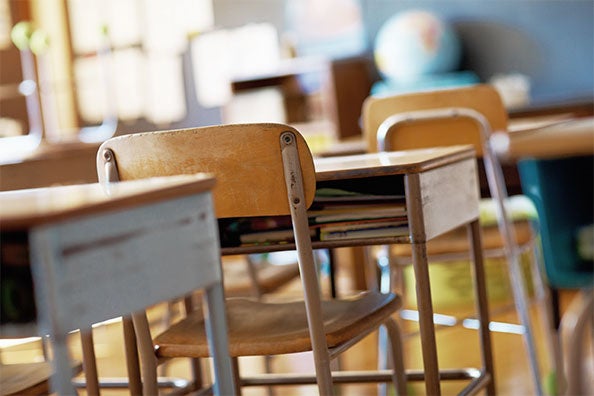
“There are so many ways that school age children will be impacted by this pandemic,” says Clinical Associate Professor Annette Johnson, chair of the college’s MSW specialization in school social work. “No one was able to really plan for the shutdown of schools, but the ability to adapt to and recover from the shutdown will be a matter of resources, and there are so many inequities in our educational system, so many disparities between schools.”
Johnson particularly worries about students in underserved communities. “In general, most children will not receive the same quality of education virtually. We’re relying on the parents and on technology,” she says. “For those families who don’t have access to technology, who are unable to provide the necessary level of support or don’t have the skillset to provide that support, the pandemic exacerbates the digital divide. Educational outcomes for those children are likely to be especially impacted.”
Another factor is the loss of school programs and after school programs that support at-risk students. “I think of schools as being almost a parent for six hours a day, and for some young people that can be a great stabilizer,” she observes. “Think about the loss of that support system, and what’s happening in those families now. We simply don’t know how the students are faring throughout the shutdown.”
Johnson is also thinking about the longer-term implications for students and for the system’s response when students return to school. “It’s going to be a new normal in the schools, and we don’t know what that new normal is going to be,” she says. “What will be the social emotional health of these young people and their families, what will we see around issues of domestic violence, child abuse or neglect? That is going to manifest in ways we can’t really anticipate, but that we need to start thinking about.”
Also requiring more attention and care will be students’ mental health coming out of the pandemic and the shelter at home and Johnson indicates that students will have experienced some level of trauma. “This has been traumatic for all of us, in ways we may not even be aware of, but I think young people will be especially impacted. We are going to see students with issues around trauma, and loss and separation, because there will be some losses here, especially in the African American community,” she says. “I think we may need to look at research that has been done in war-torn countries where families have experienced significant crisis for long periods of time. Whatever trauma these children experience, the schools will have to own a lot of that, and be responsible for addressing it, because that’s where youth spend such a large portion of their day.”
Children and Families in the Child Welfare System
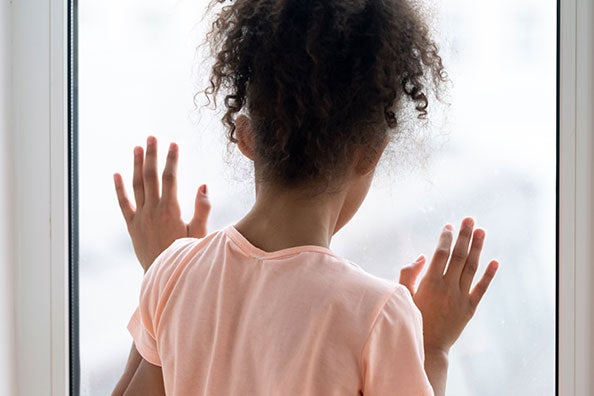
The impact on families involved in the child welfare system will be variable and may depend on where the family is on the continuum of services. At one end of the continuum, social distancing may have the effect of obscuring incidents that typically bring a family into the system. “With social distancing and orders to stay at home, especially for children and families who are more at risk, there is now a lack of what we call sentinels, individuals outside the family who can observe and report cases of abuse or neglect,” says Assistant Professor Christina Myers, whose work focuses on child welfare policy and practice. “The system relies on school social workers, school counselors, therapists and other individuals to report such incidents. For families not already in the system and with children now staying home from school, there could be an increase in cases that go unreported.”
She also worries about an increase in stressors that tend to amplify negative parent-child interactions. “At-risk families are already dealing with a variety of stressors. During the pandemic, if they’re worried about health, or the parents are going through financial challenges, all those kinds of things carry through to parenting and that can heighten tensions,” she says. “And children are home all day and require more care from the parents, so the parents are more stressed, and the children may experience greater levels anxiety. All of this can increase negative parent-child interactions, with mental health implications for the children.”
Myers notes that Illinois DCFS has responded to the pandemic by adapting the way it delivers services. For cases of abuse or neglect, it seems that in-person investigations are still being conducted, but caseworker visits for families receiving ongoing or foster care services are being conducted virtually or by phone. “Because case worker visits are being done virtually, they are now happening weekly instead of monthly,” she says. “Interestingly, that could have a beneficial effect of strengthening the relationship between the case worker and the family, and making families feel more supported. It might also help the caseworkers achieve a fuller understanding of what that family is going through and what their concerns are. That’s speculation, but it will be interesting to see how this plays out.”
The Impact on Service Delivery in the Community
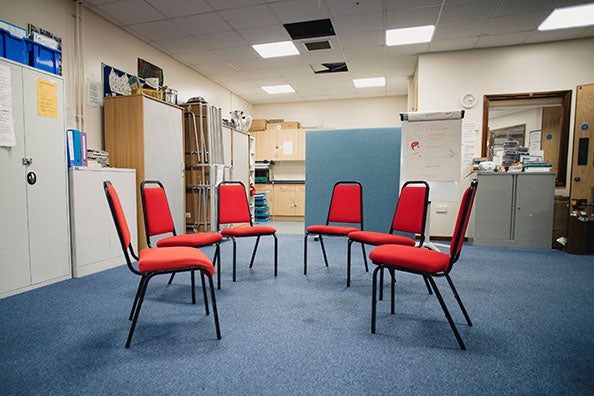
The pandemic has forced many social service agencies to change how they deliver services and conduct their business. Private sector companies and other organizations with access to resources have responded with the rapid implementation of and reliance on new technologies. For many community-based non-profit organizations, which are often under-resourced and operate on shoestring budgets, the shift to operating virtually has been much more difficult.
Henrika McCoy observes that this is another example of the digital divide in America. “I know there are staff at agencies who are not familiar with the technologies needed to function virtually. These people provide crucial services in our communities, and they are not prepared for a disruption like the coronavirus, requiring social distance and staying at home,” she says. “Additionally, so many of their clients are not able to use the technology or may not have access to a computer. The requirement of technology to maintain public health may actually get in the way of people receiving services that they need.”
As an example, McCoy cites an agency she knows that has struggled to get paperwork signed by clients, paperwork needed for the agency to be reimbursed for the services they provide. “The agency has no experience using PDFs or working with ZIP files. Until now, they had done everything on paper and that was working for them,” she says. “But that’s doesn’t work now. How can an organization like that adapt to the new reality of the pandemic, to get services to the people who need it, but also to meet their own financial needs? Again, we see that a crisis such as the coronavirus tends to magnify existing social and economic disparities.”
Amidst the pandemic’s starkly disproportionate impact in the Black community, Joseph Strickland, PhD, Associate Director of the Jane Addams Center for Social Policy and Research, sees a potential positive outcome that could arise from the crisis. “One result of the disproportionate impact on poor communities of color is that officials at the state, county and local levels have come to understand the need to have boots on the ground in the community, in order to properly respond to such a health crisis. A community-centered approach is something that the Center has long advocated for,” he says. “In the past, resources and investment tended to go to larger organizations outside the community. Maybe now we can start to see investment in the community, and see grassroots organizations getting the resources they need to respond in a situation like this. It’s just good public policy and good public health.”